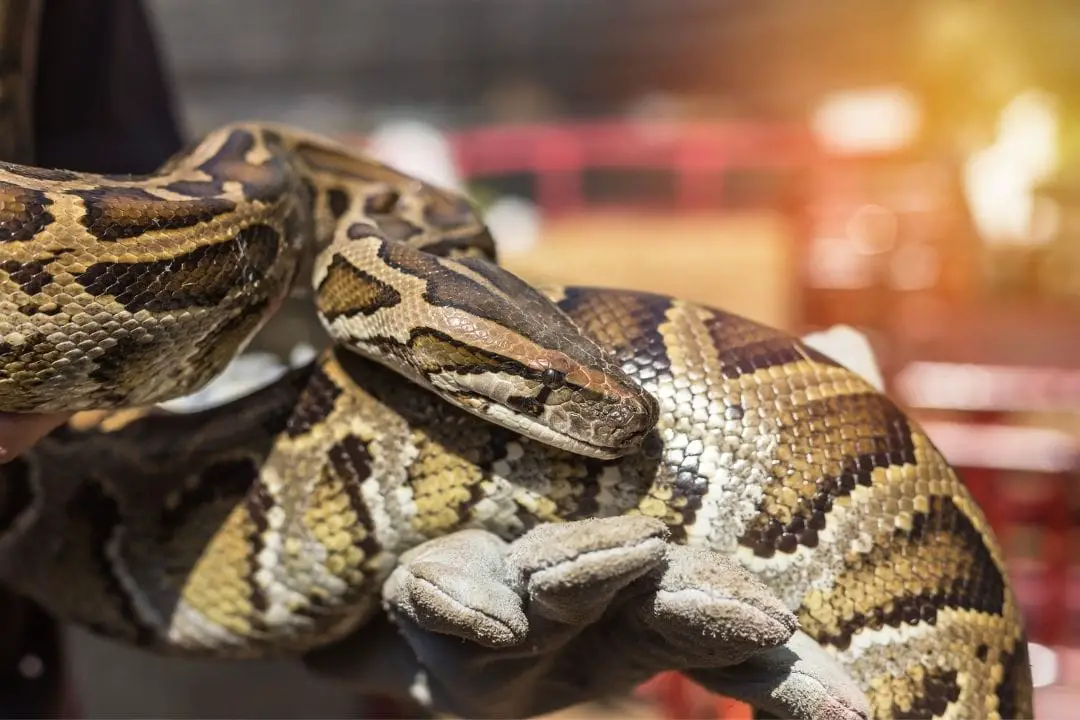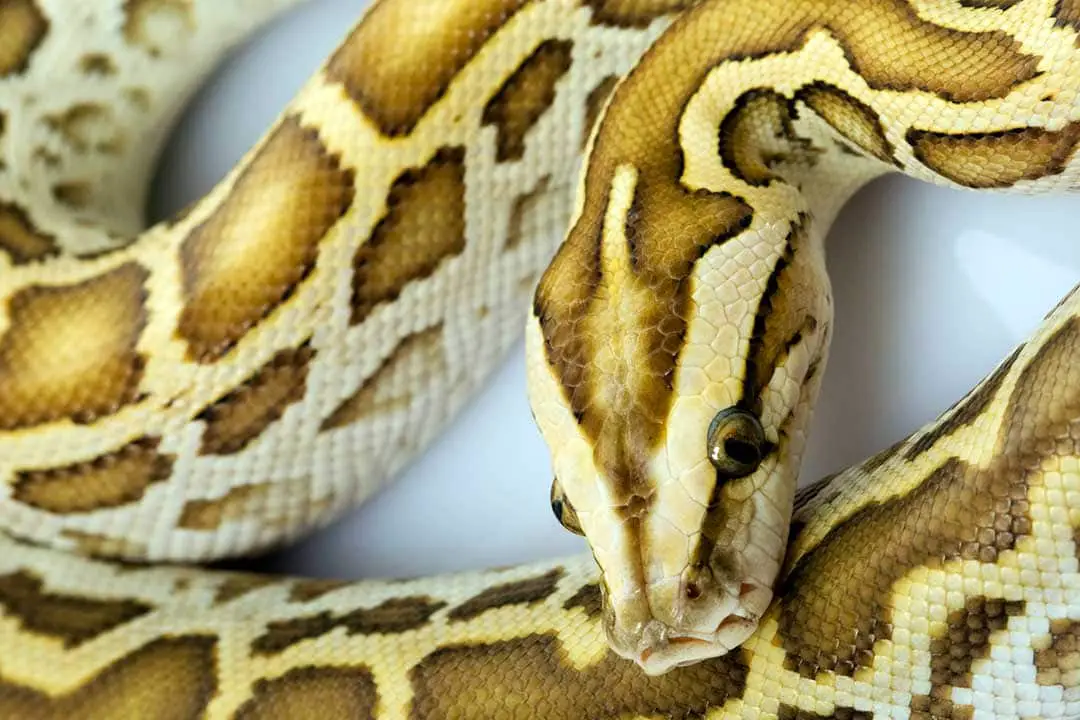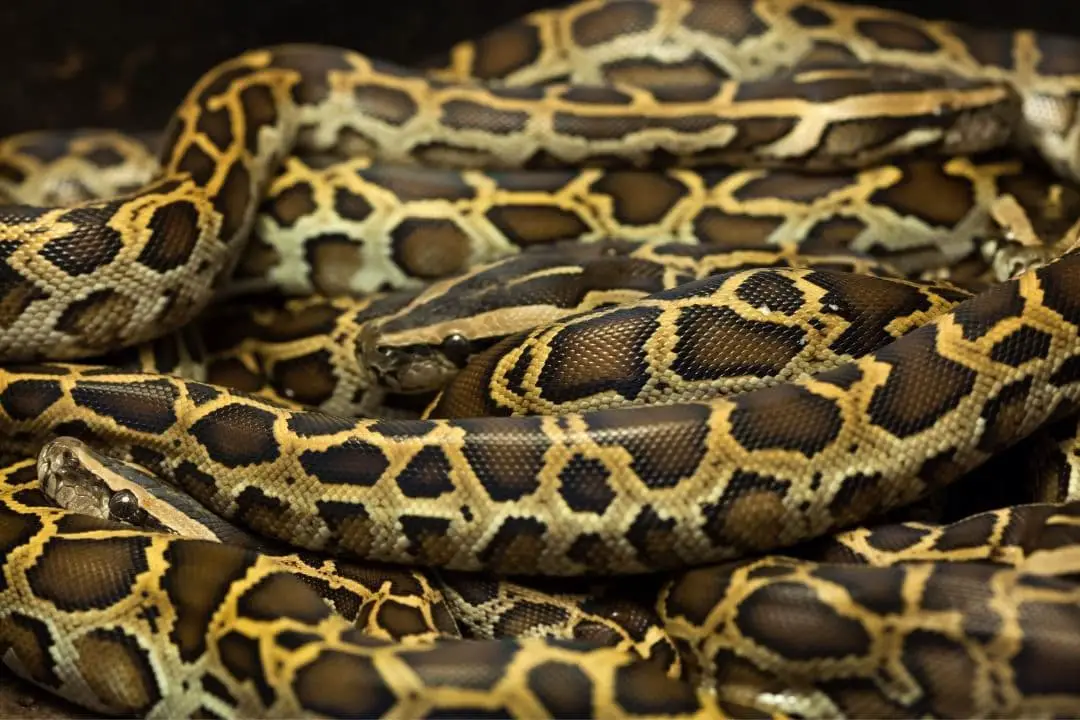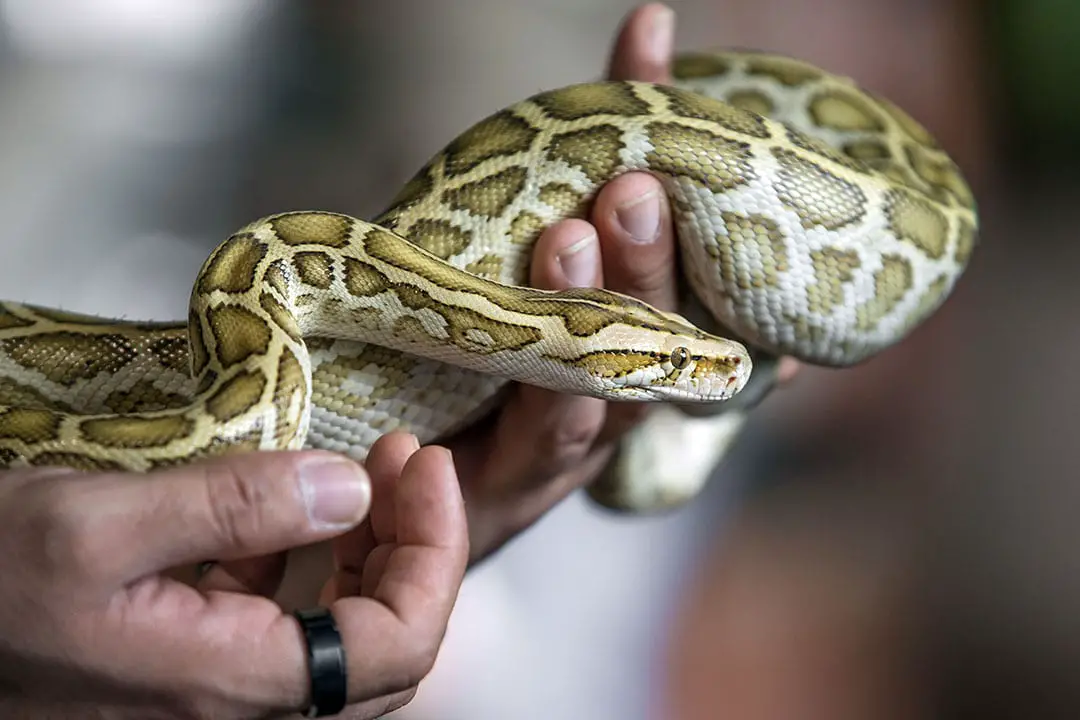The Burmese python (Python bivittatus) is a large constrictor snake native to Southern and Southeast Asia.
These huge predators get to a massive size, but you may be wondering how long they live for.
On average, a Burmese python will live 15 to 20 years. Wild snakes can be on the lower end while captive snakes can live to over 20. The oldest Burmese python lived to be 28.
Wild Lifespan
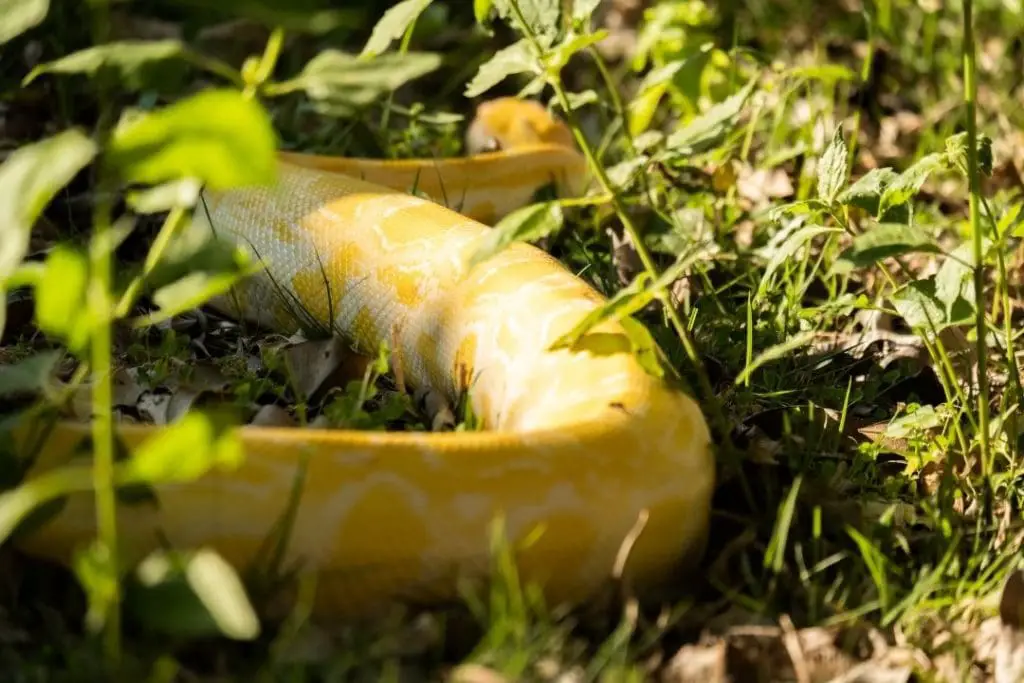
In their native range, a snake that has reached full size will likely live to be around 15 years old. This is because there is very little that can take on a 15-foot animal in their native range.
Adults pretty much only need to worry about humans. This is because adults are frequently hunted for their skins. Babies and young snakes are frequently eaten by many predators in their native range.
This is partly why they grow so quickly for the mainland snakes. A mainland Burmese python will reach 6 feet by a year old. They typically hit 10 feet within another year or so.
This helps make them too large to be eaten by predators quickly.
Exact growth rate will depend on how often they can feed. Since they are ambush predators, they can go quite some time between meals.
Generally speaking, these snakes hit sexual maturity around the time they hit their full size. It can happen sooner or later depending on the animal.
Males typically hit sexual maturity before females. Females typically put on weight before breeding for the first time. A female in poor condition may not breed, so it isn’t unusual for a snake to skip a breeding season.
They will typically be able to breed until their teens. Burmese pythons do suffer from a few parasites and diseases that can kill them.
Mites are known to transmit a number of diseases that can kill a snake. Animals that were already stressed or injured are more likely to die.
Invasive pythons in Florida have fewer predators to worry about. Very few animals will hunt them. The biggest predators they face are alligators.
However, they typically get too large for an alligator to attack within a few years. They might starve, but this takes a long time for these snakes since they are adapted to long periods of fasting.
They can be killed by cold weather, but this is rare in the Everglades.
Most snakes that die of the cold are those that have tried heading further north to find more prey. This lack of predators is part of what makes them such a threat to the ecosystem.
Once the snake reaches a certain size it may very well live to a ripe old age. They may suffer from an infection or illness, but many snakes will survive.
Since the majority of snakes avoid contact with humans, they do not face issues like roadkill or being killed by a human. All an animal has to do to avoid humans is stay in areas that are hard to reach.
In Captivity
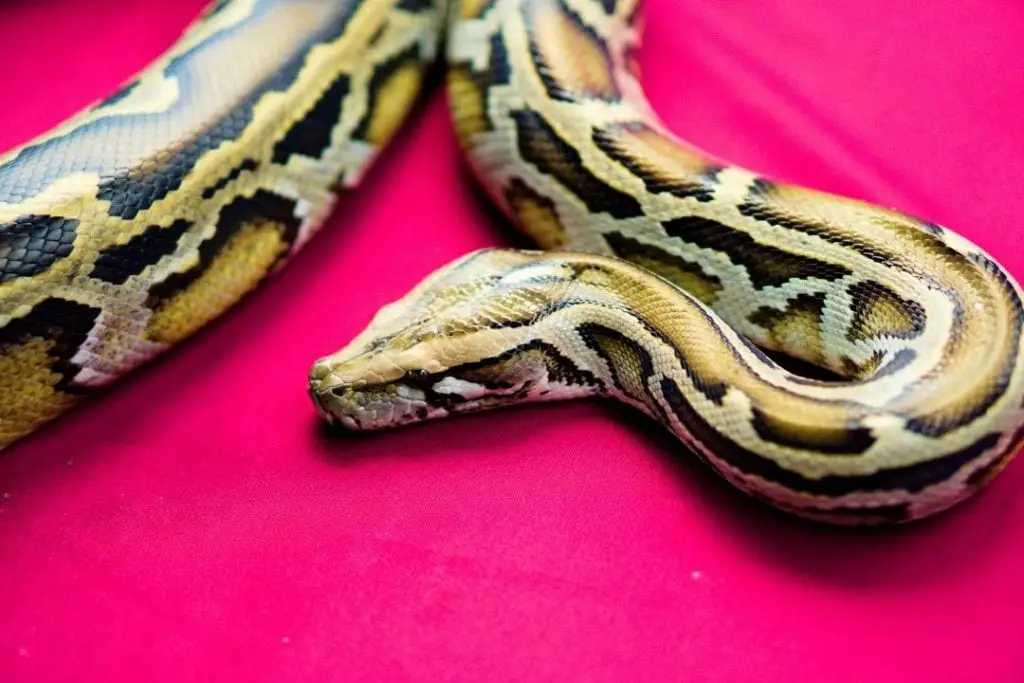
Burmese pythons that are given good care will live for 20 years or more. It takes a lot to do this since they are such larger animals.
You need to have a good enclosure that holds heat and humidity. Read my enclosure setup and care guide for burmese pythons here.
Your snake will need veterinary care to keep it healthy for as long as possible. Health problems can kill snakes very quickly.
For instance, poor humidity can cause a deadly respiratory infection in Burmese pythons. This can kill a snake quickly since they will struggle to breathe.
It can be difficult to treat since these are large animals that can be hard to move. This is figuring the snake doesn’t lash out to defend itself since it will be scared and in pain.
Other care concerns include parasites and other infections. Many parasites can pass quickly around a reptile collection.
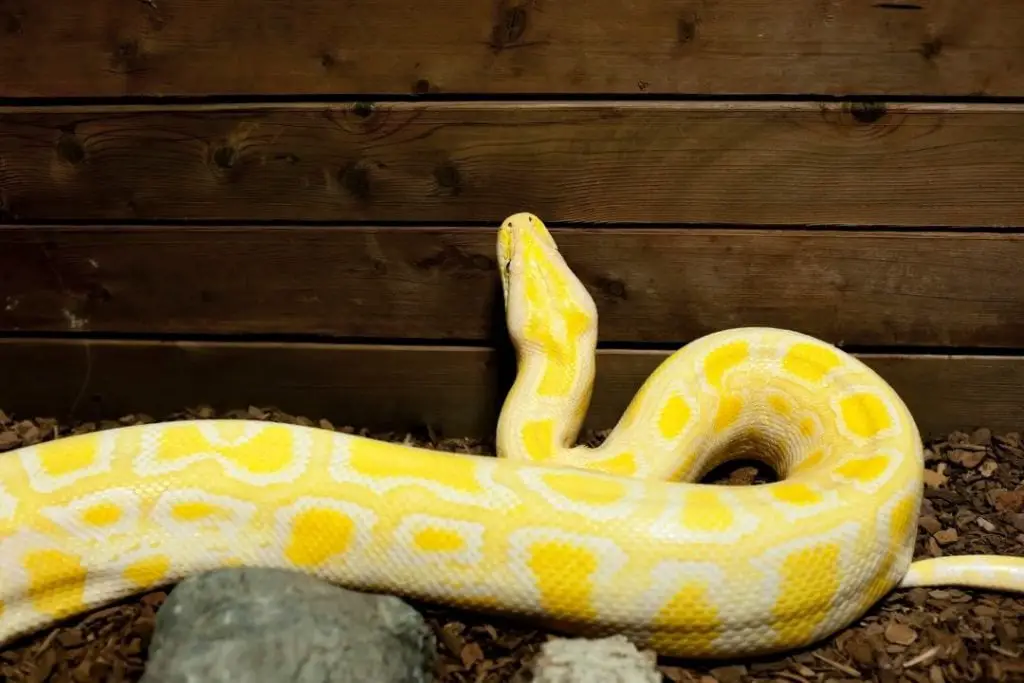
Always take measures to prevent mites and other parasites. Captive snakes are very good at hiding illnesses. You may only see a lack of appetite and defensive behavior to alert you to a problem.
Even large snakes can hide injuries and infections. This is particularly true since it can be harder to check the belly of the snake or feel any unusual lumps. Smaller snakes can easily be checked during handling to notice any changes. With a large Burmese python, you may need to have a vet check the snake to spot a problem.
Obesity is a huge issue for captive Burmese pythons. It is easy to overfeed these snakes. They need smaller meals spaced out to maintain their body condition.
Snakes typically develop internal fat stores that can put pressure on their organs. This can cause stress on the snake. By the time visible fat deposits can be seen, the snake may be losing years off its life.
If you suspect your snake is becoming overweight, talk with your vet to make a plan to address it. Offering food less frequently will be a likely first step.
Fasts lasting a few months are also common with the species since it mimics how they eat in the wild.
Conclusion
Burmese pythons can live for over 10 years in the wild.
Captive snakes can easily live for double that time. If you commit to owning on of these snakes, you should expect to own it for over 20 years.
If you have any questions or comments, please leave them below.
